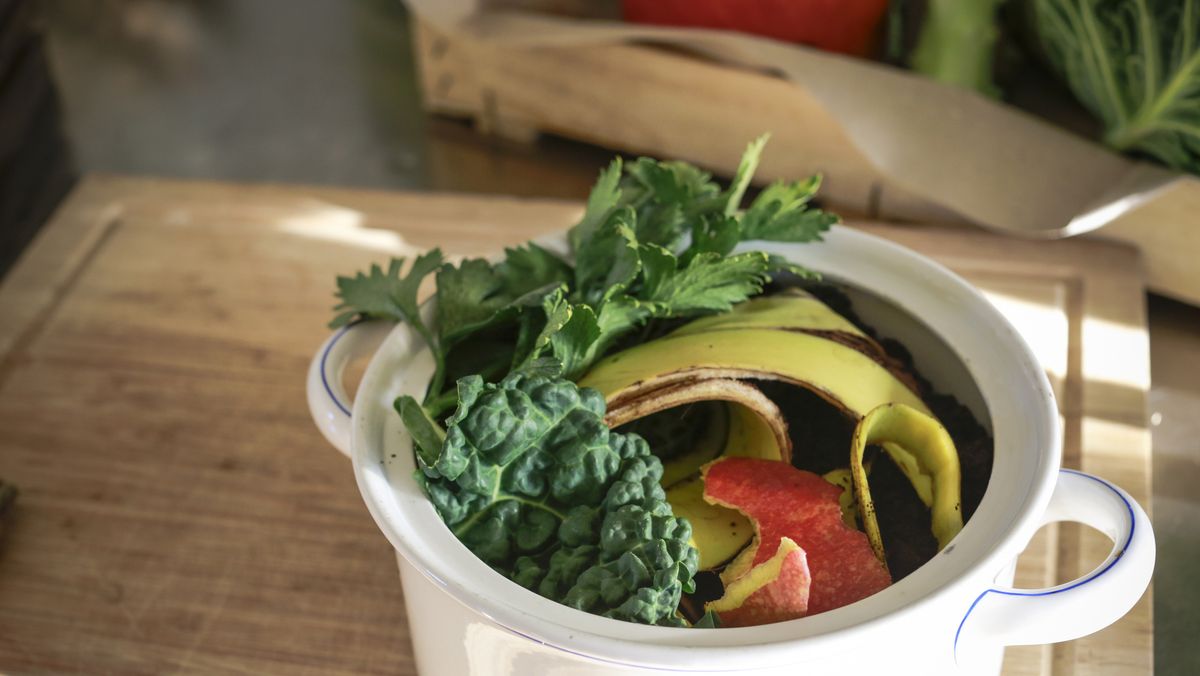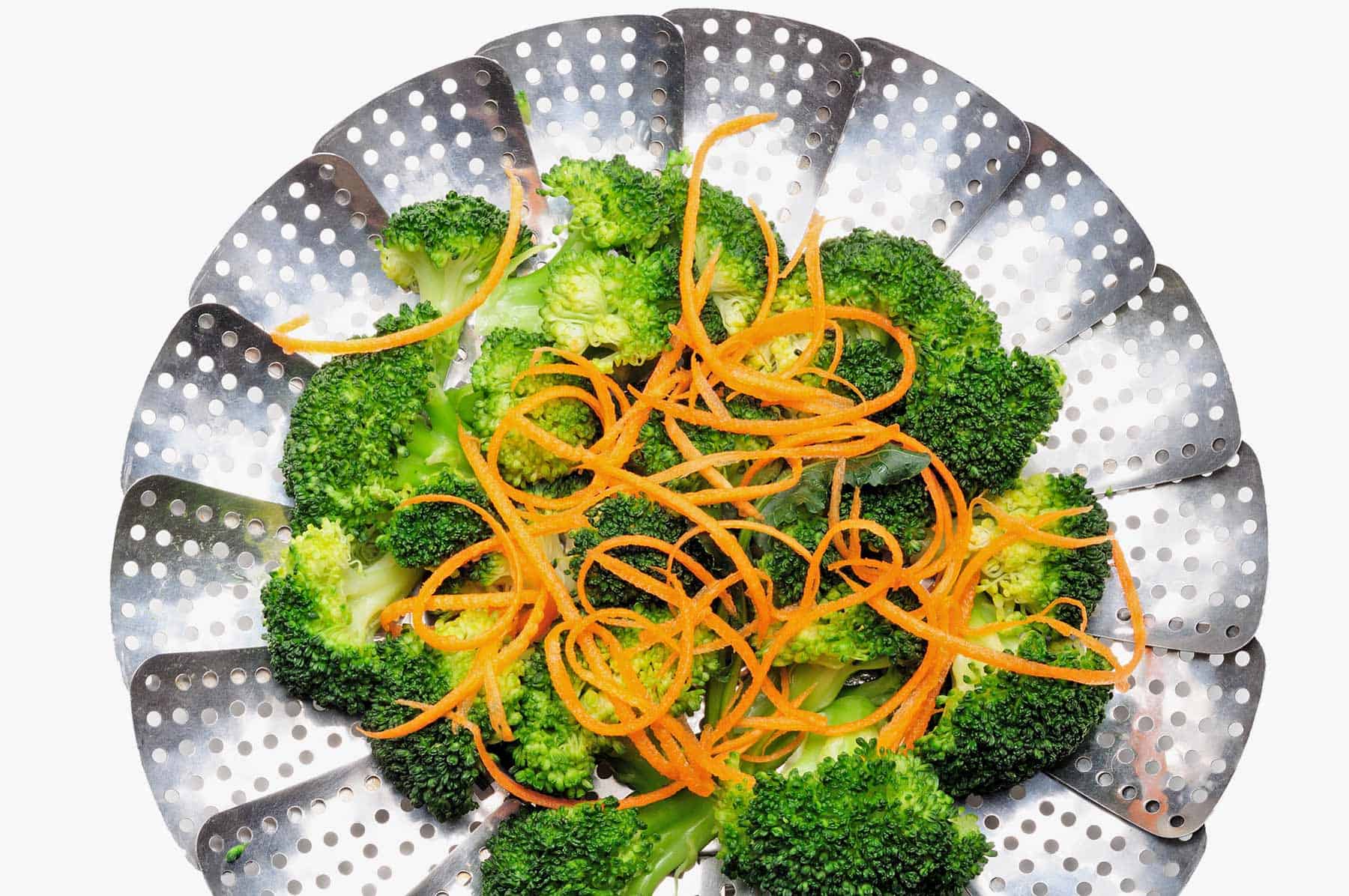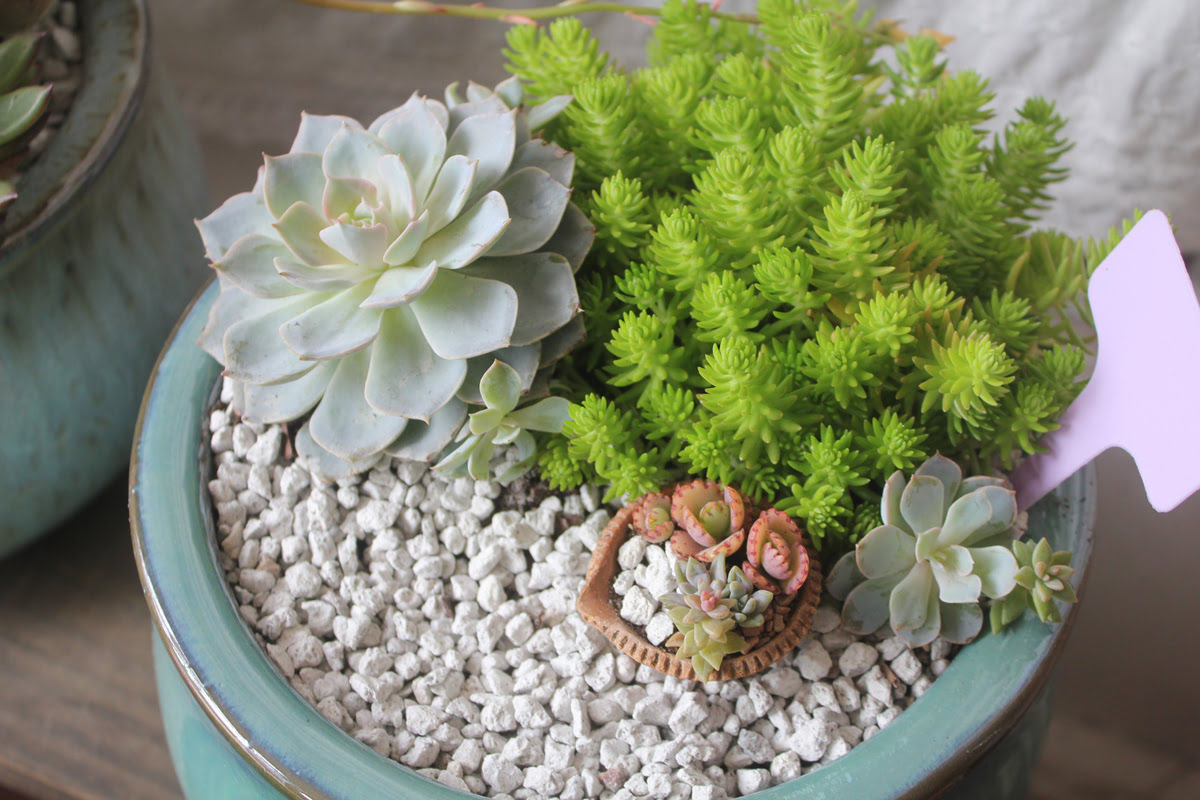Home>Gardening Tips and Tricks>Problem Solving>How To Pull Weeds Without Hurting Your Back


Problem Solving
How To Pull Weeds Without Hurting Your Back
Published: December 15, 2023
Discover effective techniques to solve the problem of pulling weeds without straining your back. Eliminate the pain and enjoy a hassle-free gardening experience with our expert tips.
(Many of the links in this article redirect to a specific reviewed product. Your purchase of these products through affiliate links helps to generate commission for Chicagolandgardening.com, at no extra cost. Learn more)
Table of Contents
Introduction
Do you love gardening but dread the backache that comes with pulling weeds? You’re not alone. Many gardening enthusiasts face the challenge of maintaining their beautiful gardens while protecting their backs from strain and injury. Thankfully, there are practical solutions and techniques to help you pull weeds without hurting your back.
When it comes to weed removal, it’s important to understand the impact it can have on your back. Bending over repeatedly or spending long periods in awkward positions can put strain on your spinal discs, muscles, and joints, leading to discomfort and potential injuries. However, with the right approach and a few simple adjustments, you can minimize the risk and maintain a pain-free gardening experience.
In this article, we’ll explore different strategies to help you weed your garden without causing harm to your back. We’ll dive into ergonomic techniques, tools that can assist you, stretching exercises to improve flexibility, and tips on maintaining proper posture. By incorporating these practices into your gardening routine, you can keep your back healthy and enjoy your time in the garden.
So, let’s get started and discover how you can say goodbye to back pain while pulling weeds!
Understanding the Impact of Weeding on Your Back
When you think of gardening, you may envision a peaceful and therapeutic activity that allows you to connect with nature. However, the repetitive motions and prolonged periods of bending and twisting involved in weeding can take a toll on your back. Understanding the impact of weeding on your back is crucial for preventing strains, injuries, and unnecessary pain.
One of the main reasons weeding can be hard on the back is due to the constant bending and stooping. This repetitive movement puts stress on the muscles and ligaments in your back, especially the lower back, which is a common area for strain and discomfort. Additionally, spending extended periods in awkward positions can compress the spinal discs and lead to herniation or bulging, further exacerbating the risk of back problems.
Moreover, the uneven and unpredictable terrain in your garden can also contribute to back strain. Uneven surfaces can make it challenging to maintain proper balance and posture while weeding. Furthermore, the resistance encountered when pulling out stubborn weeds can put additional strain on the back muscles, leading to overexertion and potential injury.
It’s essential to recognize the warning signs that your back is being overworked during weeding. Muscle stiffness, soreness, and aching in the lower back are common indications of strain. If left unaddressed, these symptoms can progress into more severe conditions, such as muscle spasms, sciatica, or even herniated discs.
By understanding the impact of weeding on your back, you can take proactive measures to protect your spine. The goal is to find ways to minimize stress on your back while still effectively removing weeds from your garden. In the following sections, we will discuss various techniques and strategies to achieve this, allowing you to maintain a pain-free gardening experience.
Preparing for Weed Removal
Before diving into weed removal, it’s important to prepare yourself and your garden to minimize the strain on your back. Taking a few moments to make the necessary preparations will not only make the task easier but also reduce the risk of injury. Here are some essential steps for preparing for weed removal:
- Wear proper attire: Dress in comfortable clothing that allows for a wide range of motion. Opt for shoes with good support and traction to ensure stability while moving around your garden.
- Warm-up exercises: Engage in some light stretching exercises to warm up your muscles before you start weeding. Focus on stretching your back, shoulders, and legs to increase flexibility and prepare your body for the physical activity ahead.
- Gather the necessary tools: Have the right tools on hand to make weed removal easier and more efficient. A sturdy garden kneeling pad or cushion can provide comfort and support for your knees while working close to the ground. Additionally, ensure your garden tools, such as a hand trowel or fork, are in good condition and easily accessible.
- Clear the area: Remove any obstacles or clutter from the area where you’ll be weeding. This includes rocks, sticks, or other debris that can cause you to trip or lose balance. Keeping your work area clear will prevent unnecessary strain on your back and reduce the risk of accidents.
- Take breaks: Weeding can be an intense and physically demanding task, so remember to take regular breaks. Set a timer or listen to your body, and take a few minutes every 20-30 minutes to rest, stretch, and hydrate. This will help prevent fatigue and allow your muscles to recover.
By following these preparations, you’ll create the optimal environment for weed removal. Taking the time to warm up, gather the right tools, and clear the area will help minimize strain on your back and make the process more enjoyable overall.
Ergonomic Techniques for Pulling Weeds
Using ergonomic techniques while pulling weeds can greatly reduce the strain on your back and make the process more comfortable and efficient. By incorporating these techniques into your routine, you can take care of your back and still effectively remove those unwelcome weeds. Here are some ergonomic techniques to consider:
- Maintain good posture: Stand or kneel with a straight back and avoid hunching or slouching. Engage your core muscles to support your spine and distribute the load evenly.
- Use proper body mechanics: When pulling weeds, bend at the knees and hips, not at the waist. This will minimize the strain on your lower back. Use your leg muscles to push yourself up instead of relying on your back.
- Alternate sides: To avoid overloading one side of your body, alternate your stance and the hand you use to pull weeds. This will help distribute the workload and prevent muscle imbalances.
- Take advantage of leverage: Use your body weight and leverage to your advantage. When pulling stubborn weeds, grip the base of the plant close to the ground and apply steady, controlled pressure while using your body weight to assist in the removal.
- Take small breaks: Avoid spending long periods in a bent or kneeling position. Take short breaks every few minutes to give your back a chance to rest and stretch.
- Use a cushion or knee pads: If kneeling is uncomfortable, use a cushion or knee pads to reduce stress on your knees.
- Use long-handled tools: Invest in long-handled tools designed specifically for weed removal, such as a weed puller or long-handled weeder. These tools allow you to remove weeds while standing upright, minimizing strain on your back.
By implementing these ergonomic techniques, you’ll significantly reduce the strain on your back and make the process of pulling weeds more comfortable. Remember to listen to your body, take breaks when needed, and adjust your technique as necessary to maintain proper form and prevent injuries.
Using Tools to Assist with Weed Removal
When it comes to weed removal, using the right tools can make a significant difference in reducing strain on your back and making the process more efficient. These tools are designed to assist you in removing weeds with minimal effort while maintaining proper posture. Here are some tools that can help:
- Garden hoe: A garden hoe is a versatile tool that can be used to chop and dislodge weeds from the soil. Opt for a hoe with a long handle to avoid excessive bending.
- Garden weeder: A garden weeder is specifically designed to remove weeds from the root. It has a long handle and a hooked or forked end that allows you to pry the weed out of the ground with minimal effort.
- Weed puller: A weed puller is a tool specifically designed for the removal of tap-rooted or deeply rooted weeds. It typically has a long handle and a V-shaped or claw-like mechanism that grips the weed and allows you to pull it out with ease.
- Garden kneeler or seat: A garden kneeler or seat provides support for your knees and back, reducing strain while working close to the ground. Look for a sturdy, cushioned option that allows you to switch between kneeling and sitting positions.
- Long-handled shears: Long-handled shears are useful for cutting back tall weeds or grass. They eliminate the need for bending and stooping, allowing you to maintain an upright posture.
- Rotary cultivator: A rotary cultivator is a motorized tool that can make quick work of loosening the soil and uprooting shallow-rooted weeds. It helps reduce the physical effort required and allows you to cover a larger area in less time.
These tools can greatly assist you in weed removal, reducing strain on your back and making the process more efficient. Experiment with different tools to find those that work best for your needs and garden. Remember to always follow the manufacturer’s instructions for proper use and maintenance of the tools.
Stretching and Strengthening Exercises for Back Health
In addition to using ergonomic techniques and tools, incorporating stretching and strengthening exercises into your routine can help maintain a healthy back while pulling weeds. These exercises improve flexibility, build core strength, and support proper posture. Here are some exercises to consider:
- Backward Bend: Stand with your feet hip-width apart and interlace your fingers behind your back. Slowly raise your arms away from your body while arching your back gently. Hold this position for 15-30 seconds and repeat a few times.
- Child’s Pose: Kneel on the ground and sit back on your heels. Lower your torso forward and extend your arms in front of you, placing your forehead on the ground. Hold for 30 seconds, focusing on deep breathing.
- Plank: Begin in a push-up position with your hands directly under your shoulders. Engage your core and hold this position for 30-60 seconds, keeping your back straight. Gradually increase the duration as you build strength.
- Bird Dog: Start on your hands and knees, keeping your back straight. Extend your right arm forward and simultaneously extend your left leg backward. Hold for a few seconds, then switch sides. Repeat 8-10 times on each side.
- Bridge: Lie on your back with your knees bent and feet flat on the ground. Slowly lift your hips off the ground, engaging your core and glutes. Hold for a few seconds, then lower back down. Repeat 10-12 times.
- Cat/Cow Stretch: Begin on your hands and knees, aligning your wrists under your shoulders and your knees under your hips. Inhale and arch your back, dropping your belly towards the ground (cow pose). Exhale and round your spine, tucking your chin towards your chest (cat pose). Repeat for 8-10 cycles.
Incorporating these exercises into your routine will help improve the flexibility and strength of your back, reducing the risk of strain and injury during weed removal. Remember to perform these exercises in a controlled and pain-free manner. If you have any existing back conditions or concerns, consult with a healthcare professional before starting an exercise routine.
Posture Tips to Avoid Back Strain While Weeding
Maintaining proper posture is crucial for preventing back strain while weeding. Poor posture can put excessive stress on your spine, leading to discomfort and potential injuries. By following these posture tips, you can help protect your back and make weed removal a safer and more comfortable experience:
- Stand or kneel with a straight back: Whether you choose to stand or kneel while weeding, maintain a straight back. Avoid hunching or slouching as it puts unnecessary strain on your spine. Engage your abdominal muscles to support your back and maintain good posture throughout the process.
- Keep your knees slightly bent: When standing or kneeling, keep your knees slightly bent. This helps absorb shock and reduces stress on your lower back.
- Avoid twisting your body: When reaching for weeds, avoid twisting your body excessively. Instead, position yourself directly in front of the weed you want to remove. This minimizes strain on your back and prevents awkward movements.
- Distribute weight evenly: If you’re kneeling, distribute your weight evenly between both knees. Avoid putting excessive pressure on one knee as it can cause discomfort and strain. If you’re standing, distribute your weight evenly on both feet.
- Take frequent breaks: Weeding can be physically demanding, so it’s crucial to take regular breaks. This allows you to rest, stretch, and maintain better posture throughout the process. Listen to your body and take breaks as needed to prevent fatigue and avoid overexertion.
- Use gardening tools with long handles: Opt for gardening tools with long handles to avoid excessive bending and twisting. These tools allow you to maintain an upright posture while reaching weeds. Use them in combination with proper body mechanics to reduce strain on your back.
- Pay attention to your body: Be mindful of any signs of discomfort or pain while weeding. If you feel strain in your back, take a moment to adjust your posture before continuing. Don’t ignore your body’s signals as they can indicate potential issues that need to be addressed.
By implementing these posture tips, you can significantly reduce the strain on your back while weeding. Remember to focus on maintaining good posture throughout the process and make adjustments as needed to ensure the health and well-being of your back.
Conclusion
Pulling weeds doesn’t have to result in a painful, sore back. By incorporating the strategies and techniques discussed in this article, you can effectively remove weeds from your garden while minimizing strain on your back and reducing the risk of injuries.
Understanding the impact of weeding on your back is crucial. By recognizing the repetitive motions, bending, and twisting involved, you can take proactive steps to protect your spine and prevent discomfort. Preparing for weed removal by wearing appropriate attire, warming up, and gathering the necessary tools can make the task easier and more efficient.
Ergonomic techniques play a vital role in protecting your back during weed removal. Maintaining good posture, using proper body mechanics, and taking advantage of tools designed for weed removal can significantly reduce the strain on your back. Additionally, incorporating stretching and strengthening exercises into your routine can improve flexibility, build core strength, and support proper posture, further safeguarding your back.
Remember the importance of maintaining proper posture while weeding. Standing or kneeling with a straight back, keeping your knees slightly bent, and distributing your weight evenly are key factors in avoiding back strain. Taking frequent breaks and listening to your body’s signals are essential for preventing fatigue and overexertion.
In conclusion, by following the tips and techniques discussed in this article, you can pull weeds without hurting your back. Incorporate ergonomic techniques, use the right tools, perform stretching exercises, and maintain good posture to ensure a pain-free gardening experience. Let’s keep our gardens beautiful while prioritizing the health and well-being of our backs.






